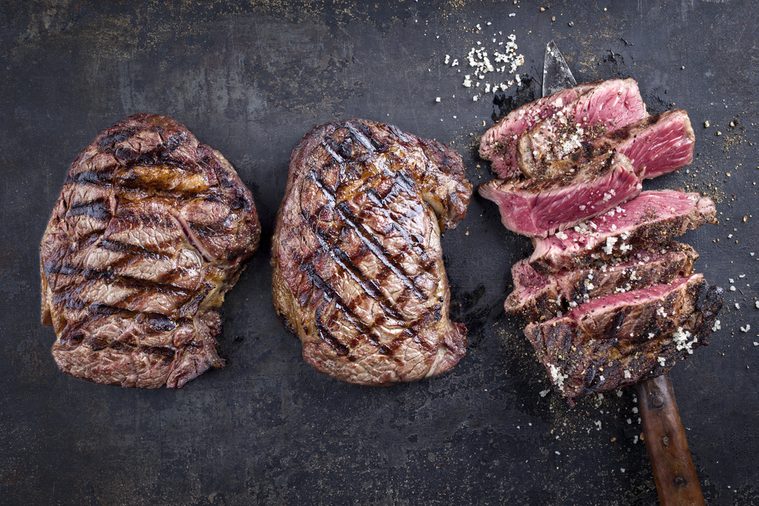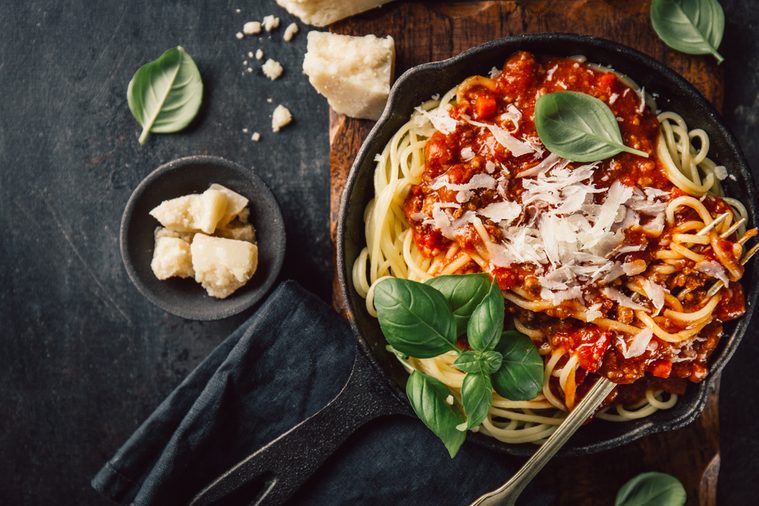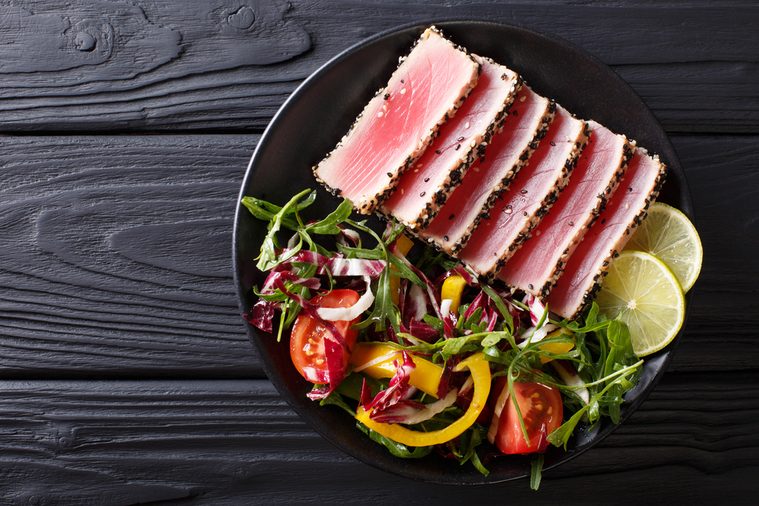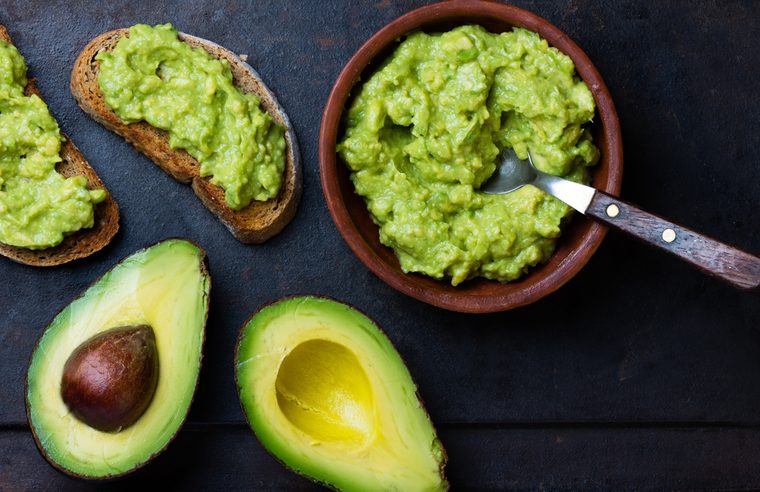
Saturated with saturated fat
What do a plate of fries, a rib-eye steak, a buttery bowl of pasta, and an ice cream bar all have in common? Besides possibly making your mouth water, they’re loaded with saturated fat. According to a new draft from the World Health Organization (WHO), we need to cut way back on such guilty pleasures. These are the 45 foods cardiologists avoid, and you should too.

Why you need to slow down
The draft, the first one published by the WHO since 2002, says adults and children should get no more than 10 percent of their daily calories in the form of saturated fat. The aim is to delay onset of chronic conditions like type 2 diabetes and obesity, and especially to reduce the risk of heart disease, which accounts for 72 percent of the 54.7 million estimated deaths worldwide every year.
“Dietary saturated fatty acids and trans-fatty acids are of particular concern because high levels are correlated with increased risk of cardiovascular diseases,” explains Francesco Branca, MD, director of WHO’s Department of Nutrition for Health and Development.
All fats are not created equal. Here’s how to breakdown the different types of fats.

Don’t toss out the good with the bad
While it’s important to eat fewer saturated fats, it’s just as important to make sure you’re getting enough healthy fats that protect your heart. We asked Joy Bauer, MS, RDN, one of the nation’s leading health authorities, how much fat we should have in our diets, and how many grams of each constitutes a day’s worth, plus the best and worst sources.
Research has found that the typical American diet consists of 79 grams of dietary fat, of all kinds, per day. This breaks down to 26 grams of saturated fat, 30 grams of monounsaturated fats, 16 grams of polyunsaturated fats and 5.3 grams of trans fats.
“Most people now know it’s okay to eat fat, specifically good fats like nuts, seeds, avocado, vegetable oils and fatty fish,” says Bauer. “These fatty foods are unsaturated and loaded in mono and polyunsaturated fats.”
These are the 50 things nutritionists never eat and you shouldn’t either. So what should you include on your menu? And what should you try to avoid? Bauer has it outlined.

A day’s worth of healthy fats
“Healthy fats should account for about 30 percent of your overall calories,” says Bauer. “If you’re following a 2,000 calorie diet, that means you can aim for about 66 grams of total fat each day.” (For those scoring at home, 1 gram of fat is 9 calories.)
Here’s what a day of healthy fats might include:
- 1 ounce of walnuts: 16 grams fat
- 1 ounce of sunflower seeds: 15 grams fat
- 2 tablespoons peanut butter: 16 grams fat
- 1 tablespoon olive oil: 14 grams fat
Total: 63 grams
Or, you could go for:
- 1 ounce of almonds: 14
- 1 tablespoon canola oil = 14 grams fat
- ½ avocado = 12 grams fat
- 1 tablespoon chia seeds = 5 grams fat (provide omega 3 fats too)
- 2 tablespoons balsamic vinaigrette dressing = about 20 grams fat
Total: 65 grams

A day’s worth of saturated fat
“Less than 10 percent of total calories should come from saturated fat,” Bauer says. “On a 2,000 calorie diet plan, that means less than 22 grams. Keep in mind, we typically eat much more than these servings.”
You can hit that ceiling in a hurry:
- ¾ cup ice cream: 14 grams sat fat
- 2 ounces cheese: 10 grams sat fat
Total: 24 grams
You can also get there with cereal, toast, and some fancy oil:
- 1 cup 2% milk: 7 grams sat fat
- 1 teaspoon butter: 4 grams sat fat
- 1 tablespoon coconut oil: 11 grams sat fat
Total: 22 grams
As for trans fats, these naturally occur in meat and dairy products, though they’re predominantly found in baked and fried foods like fries, chips, and partially hydrogenated cooking oils. The bottom line is this will be a dramatic change for most Americans, says Bauer. If you need added motivation, just remember that heart disease is the number one killer in this country—and around the world. Don’t miss these 14 things that you think cause heart disease, but don’t.
